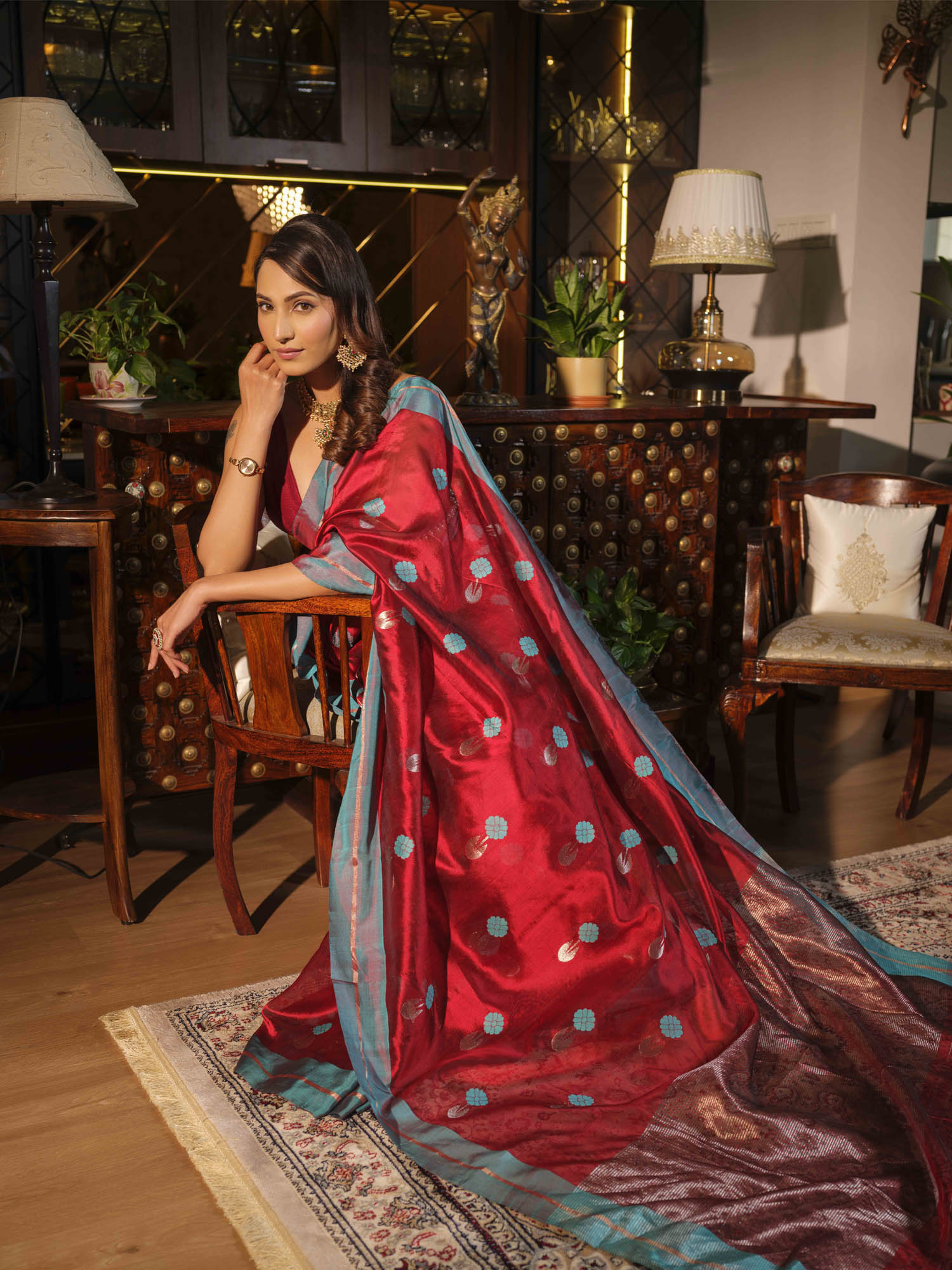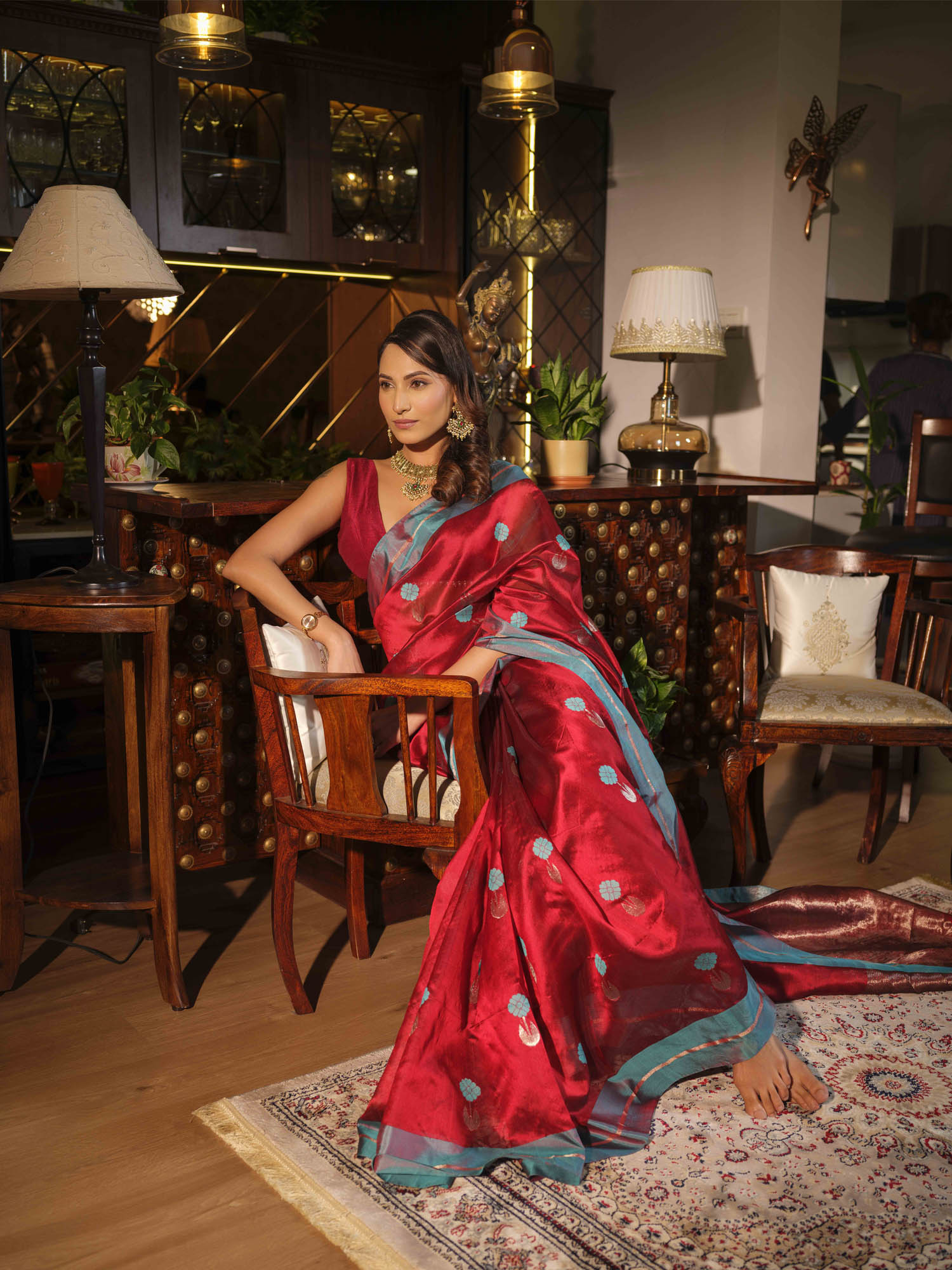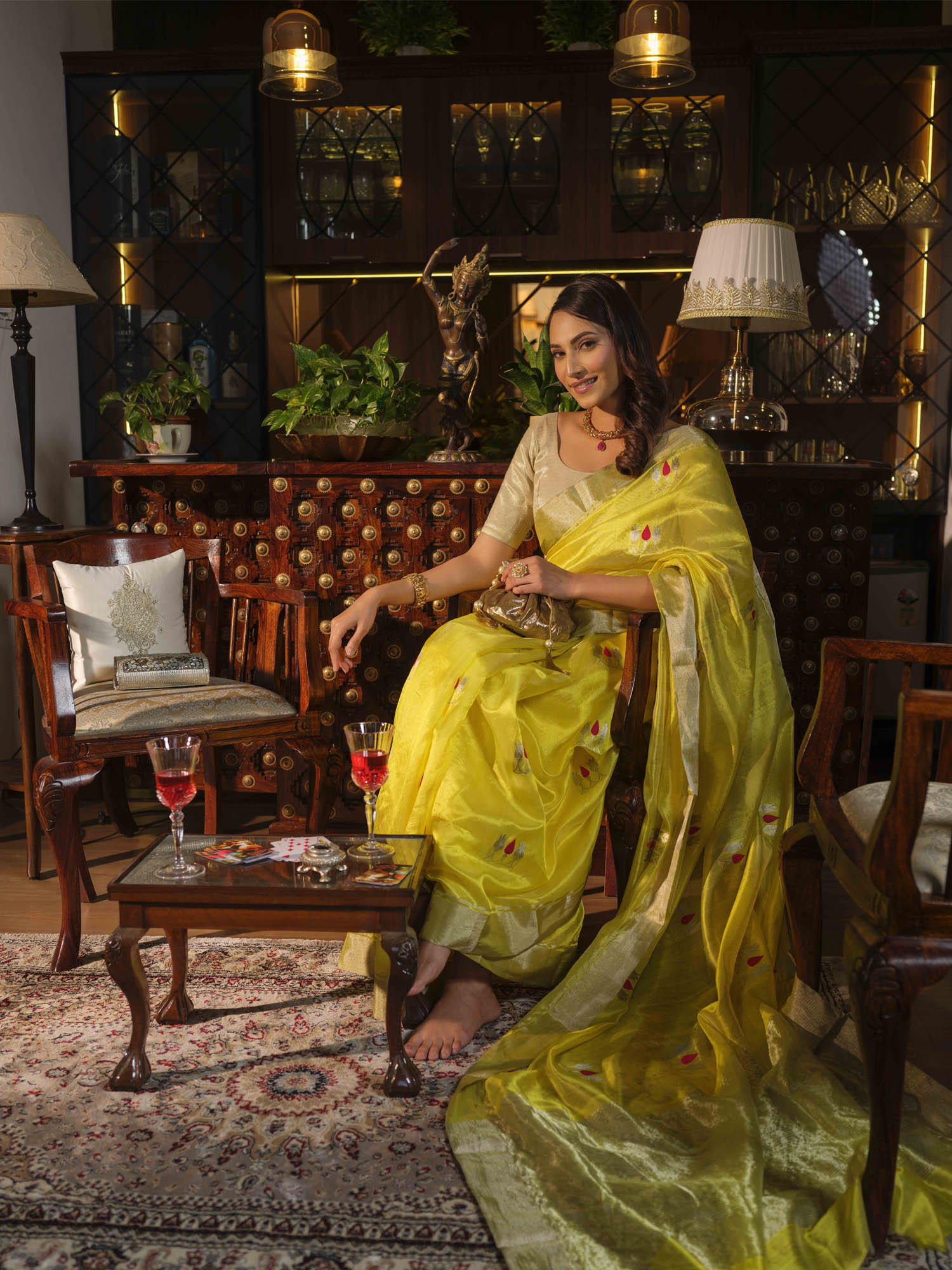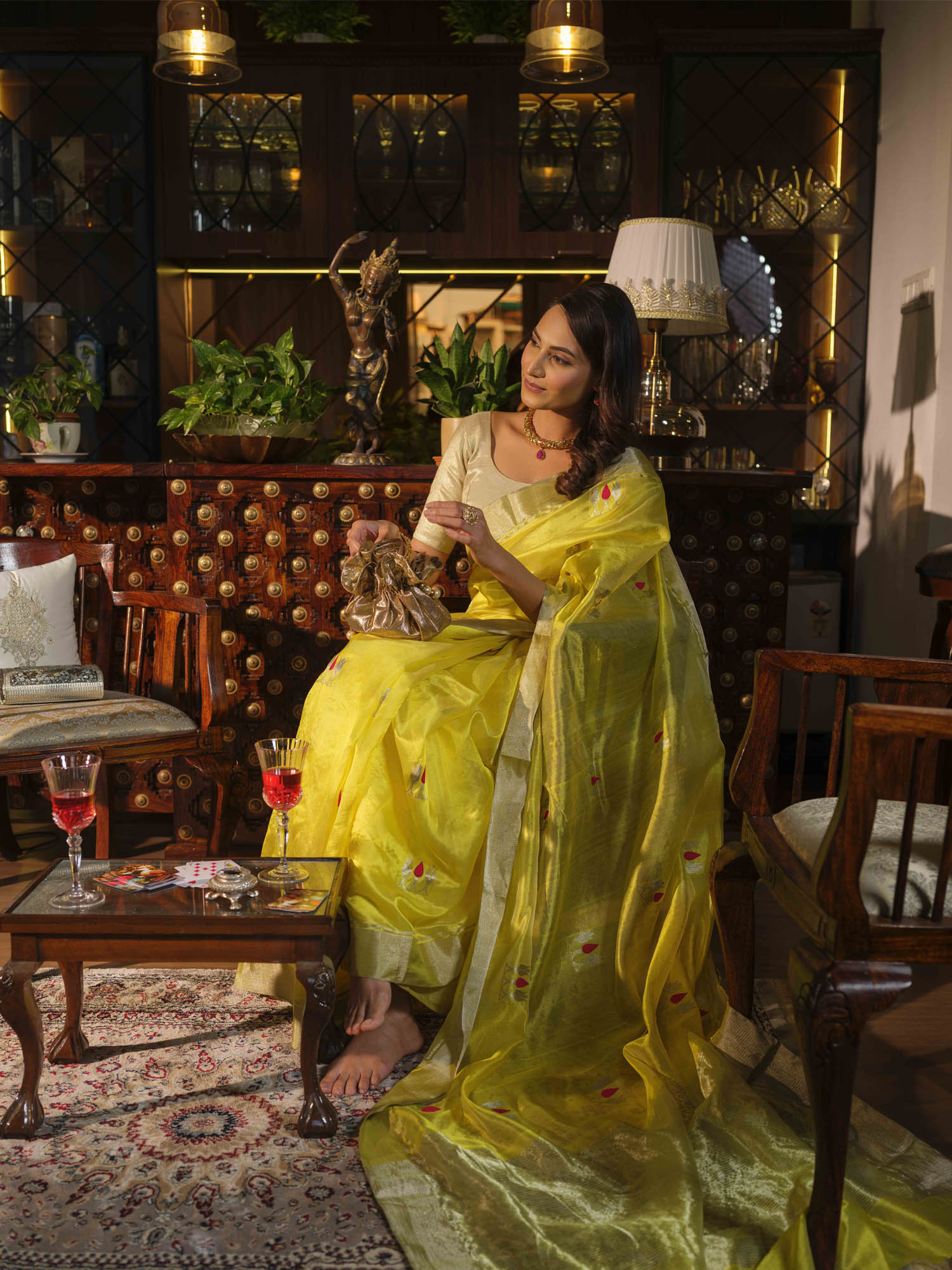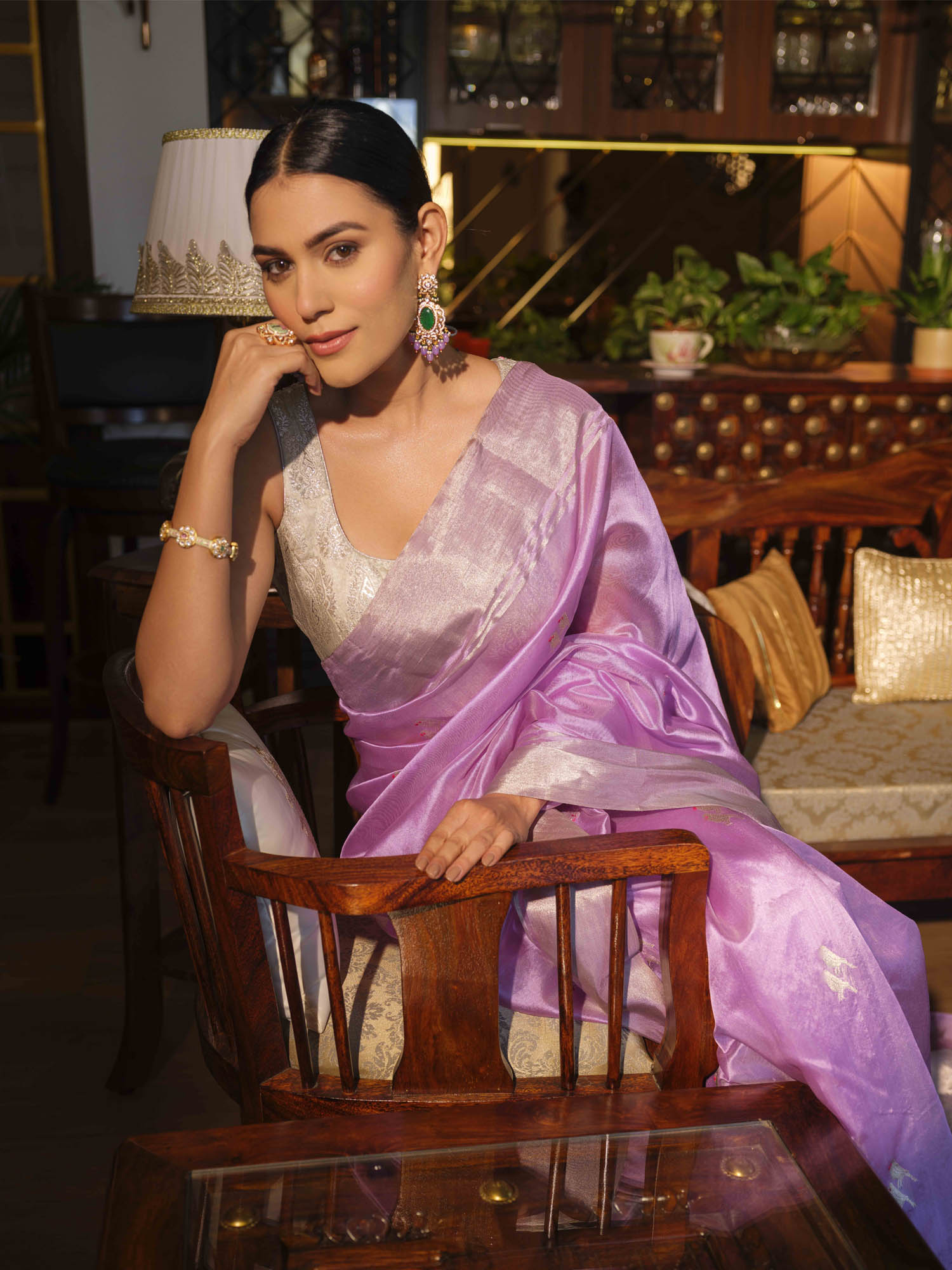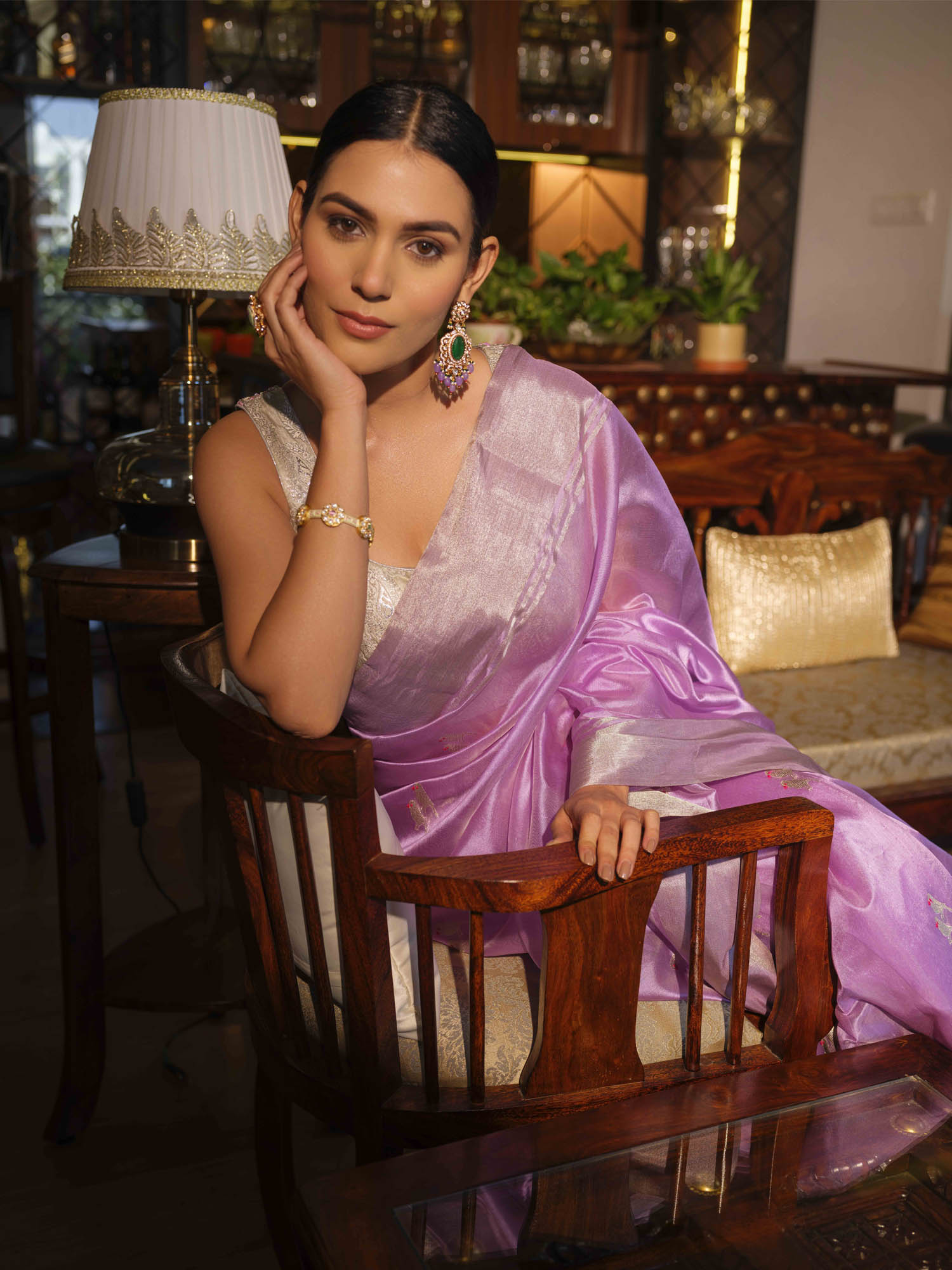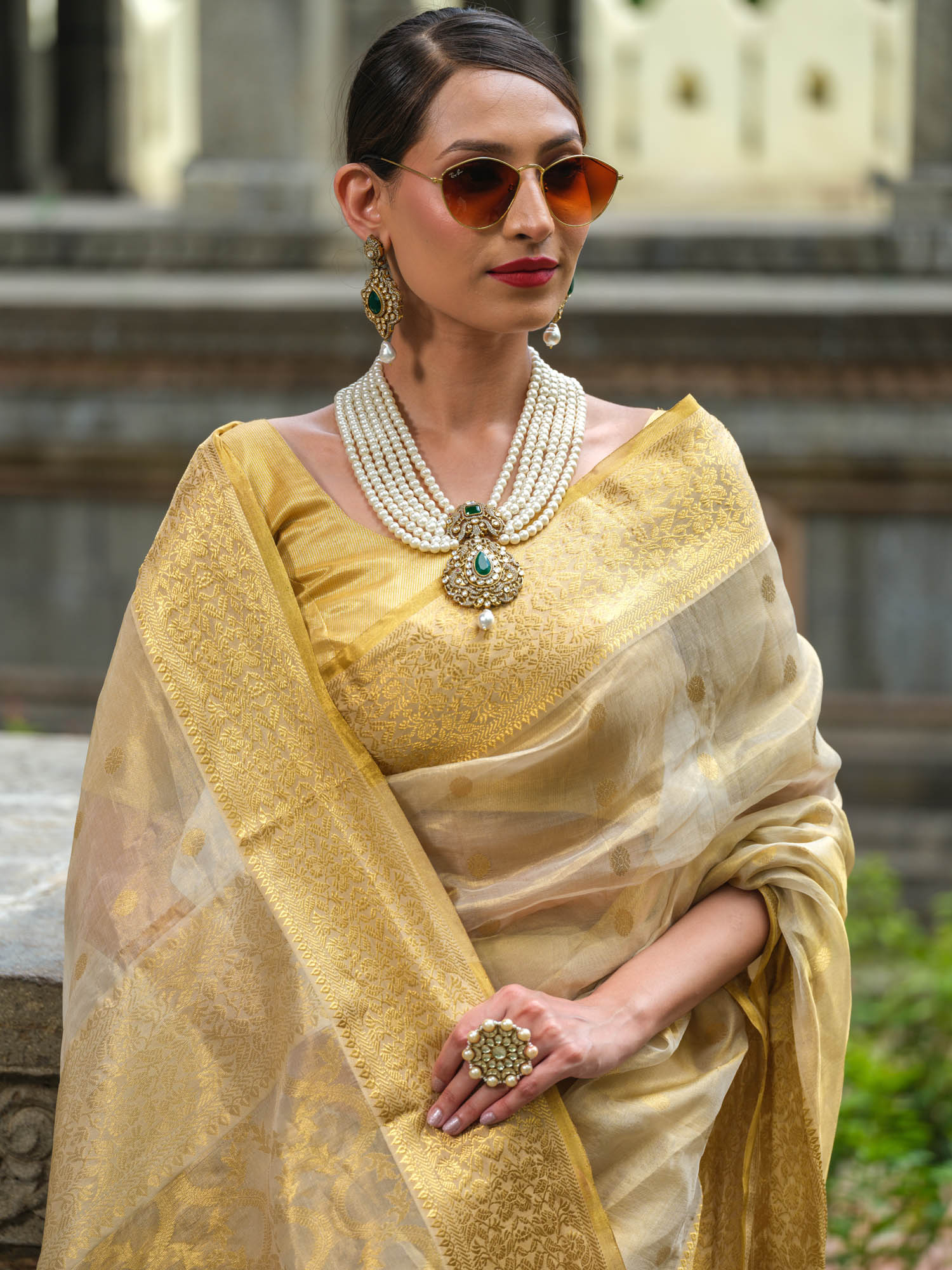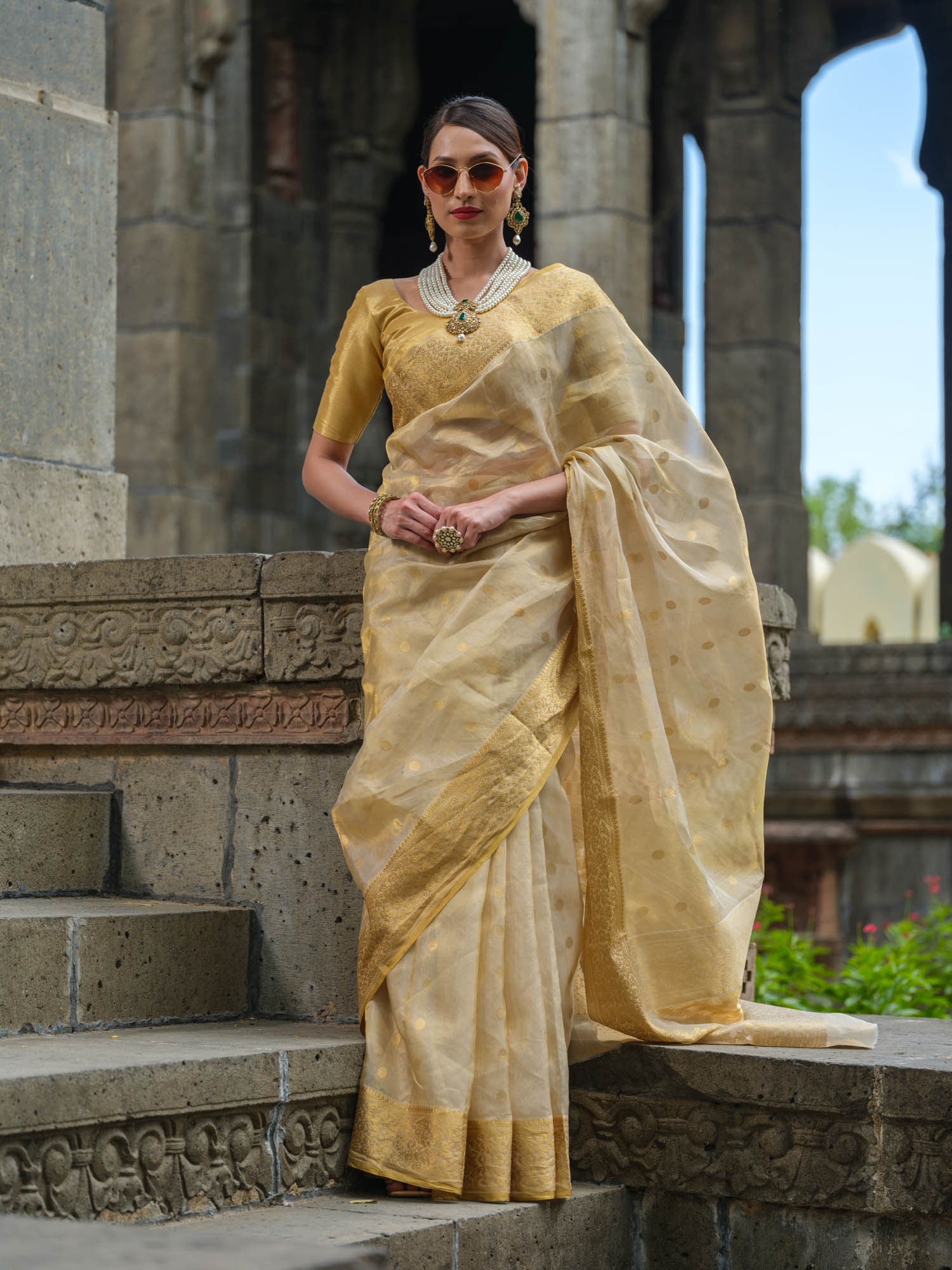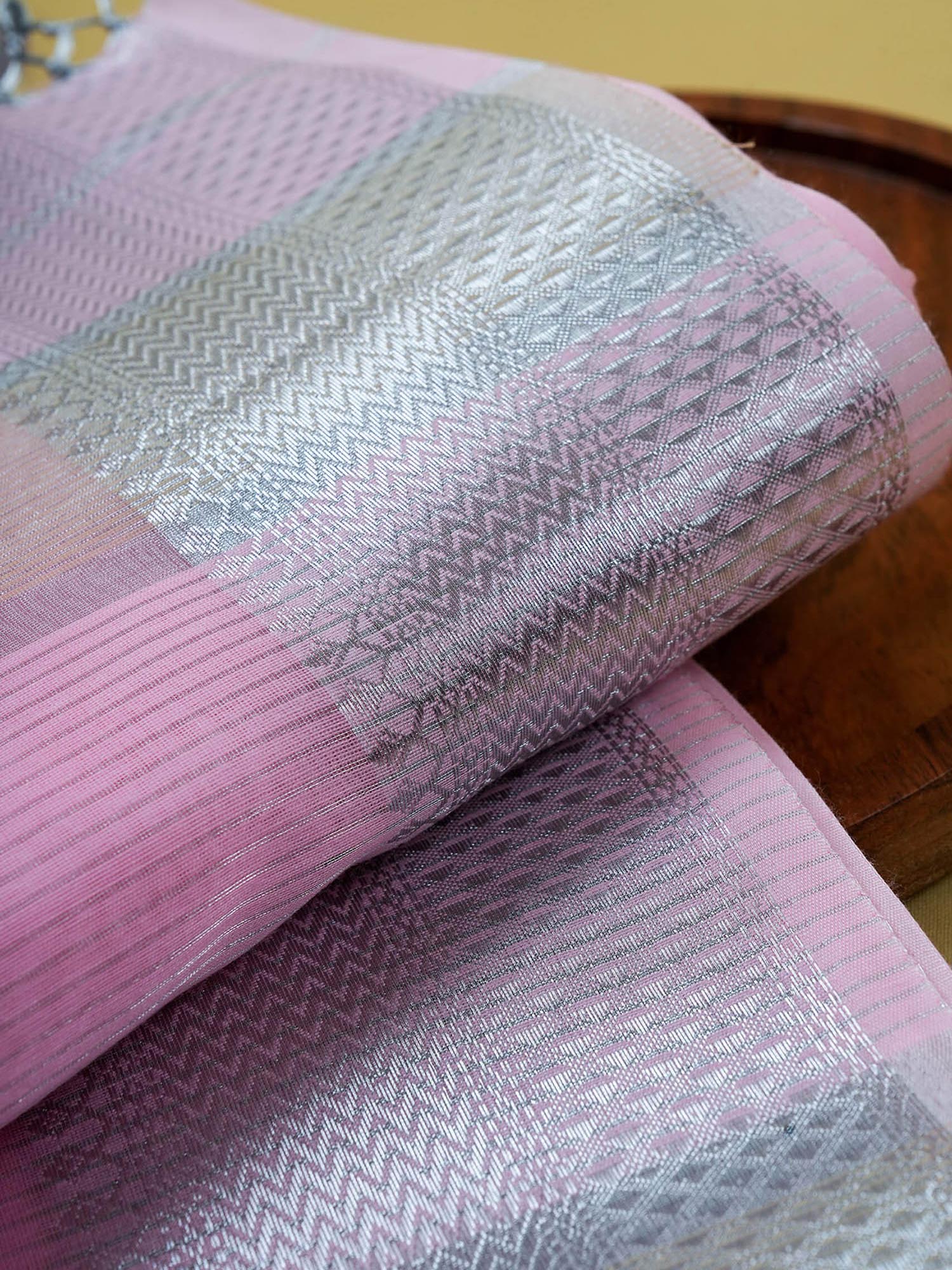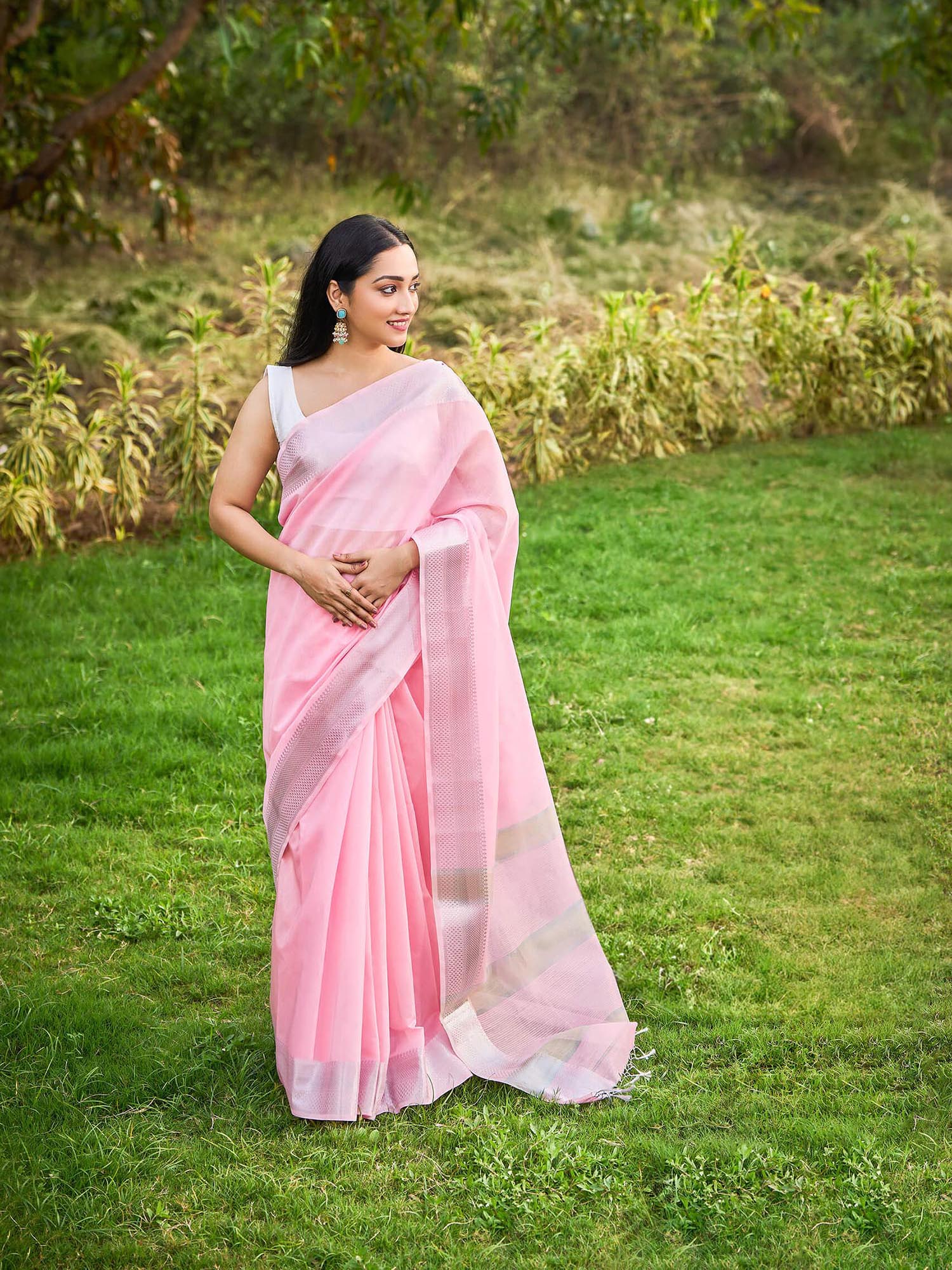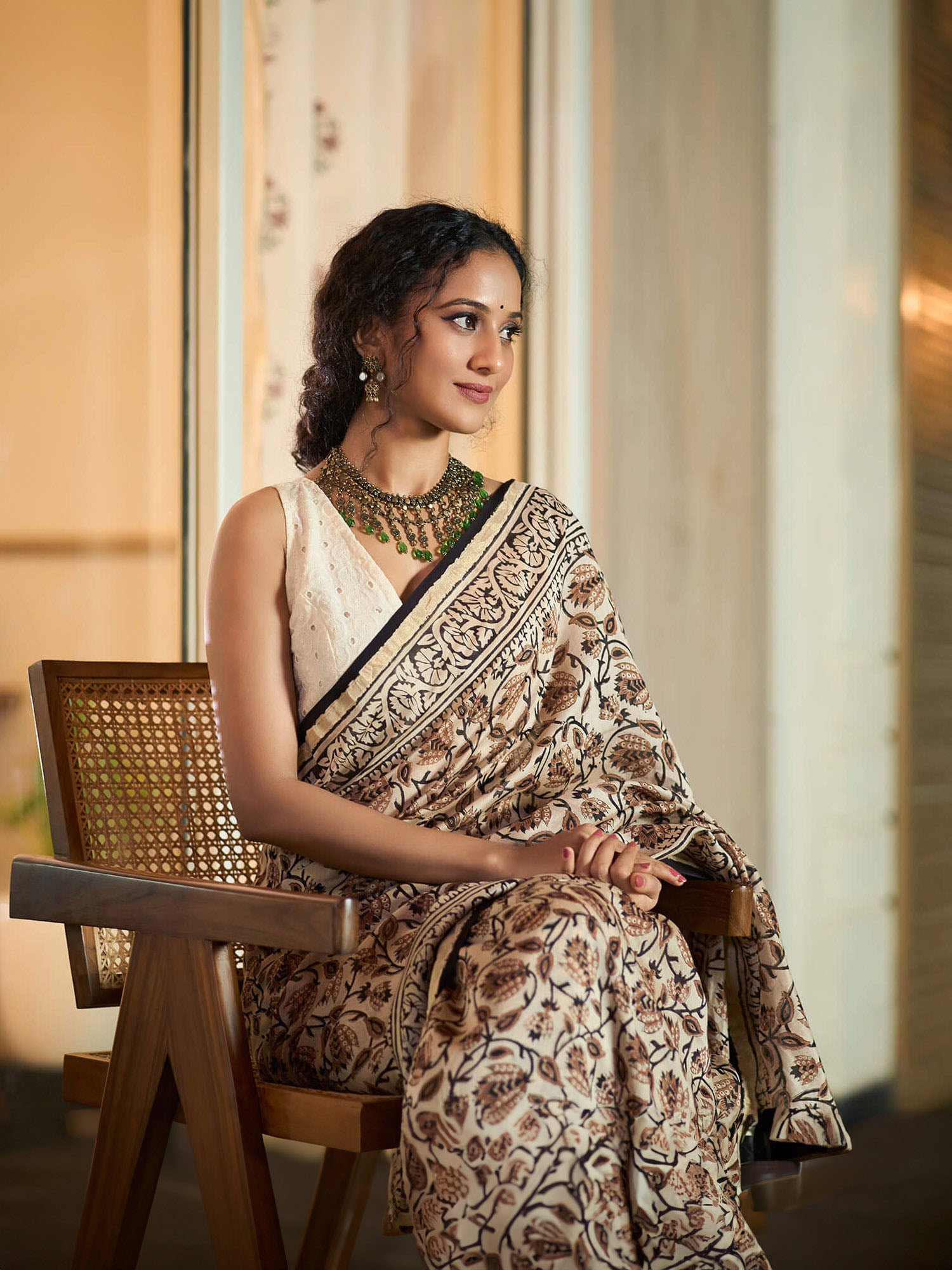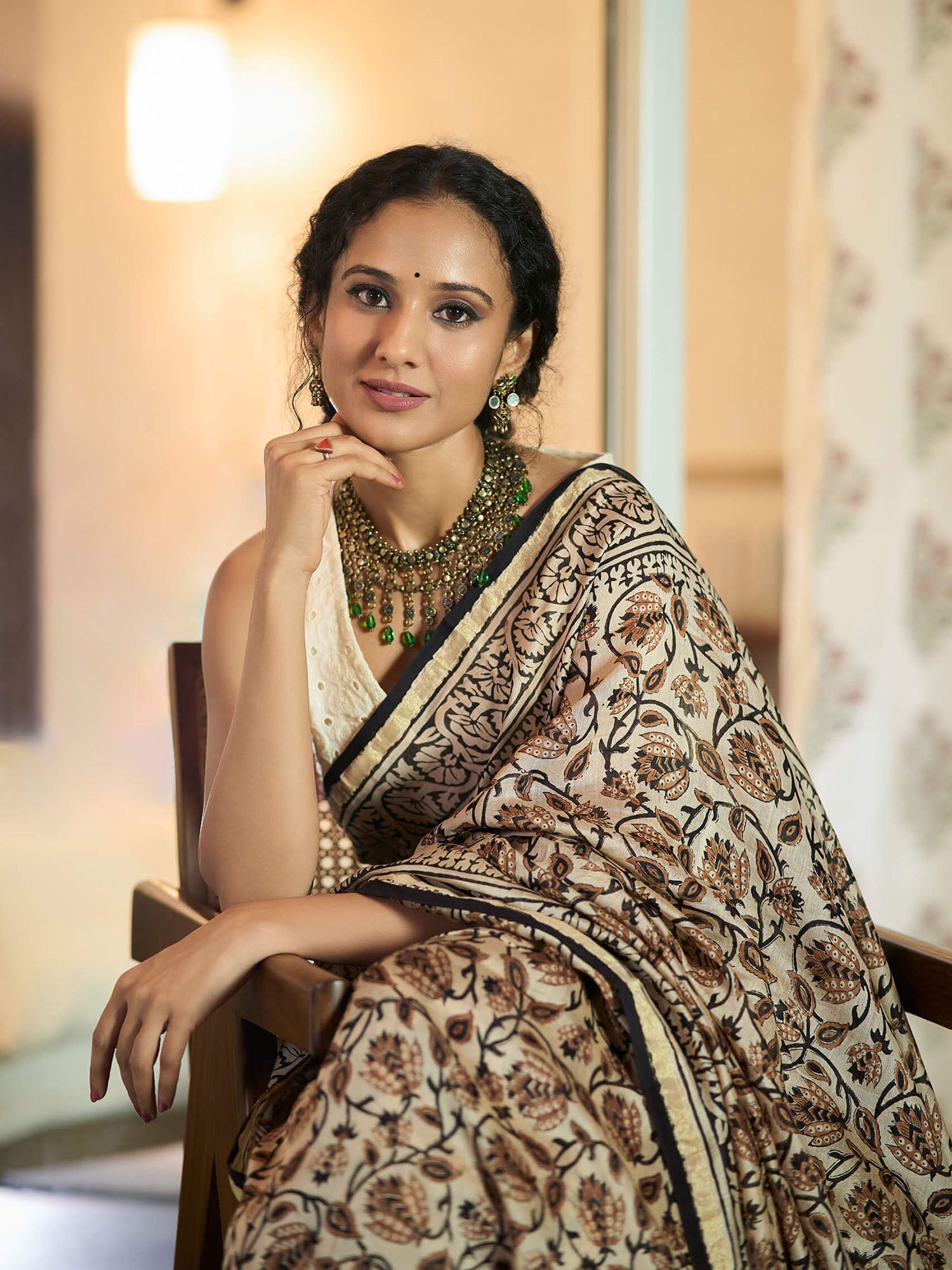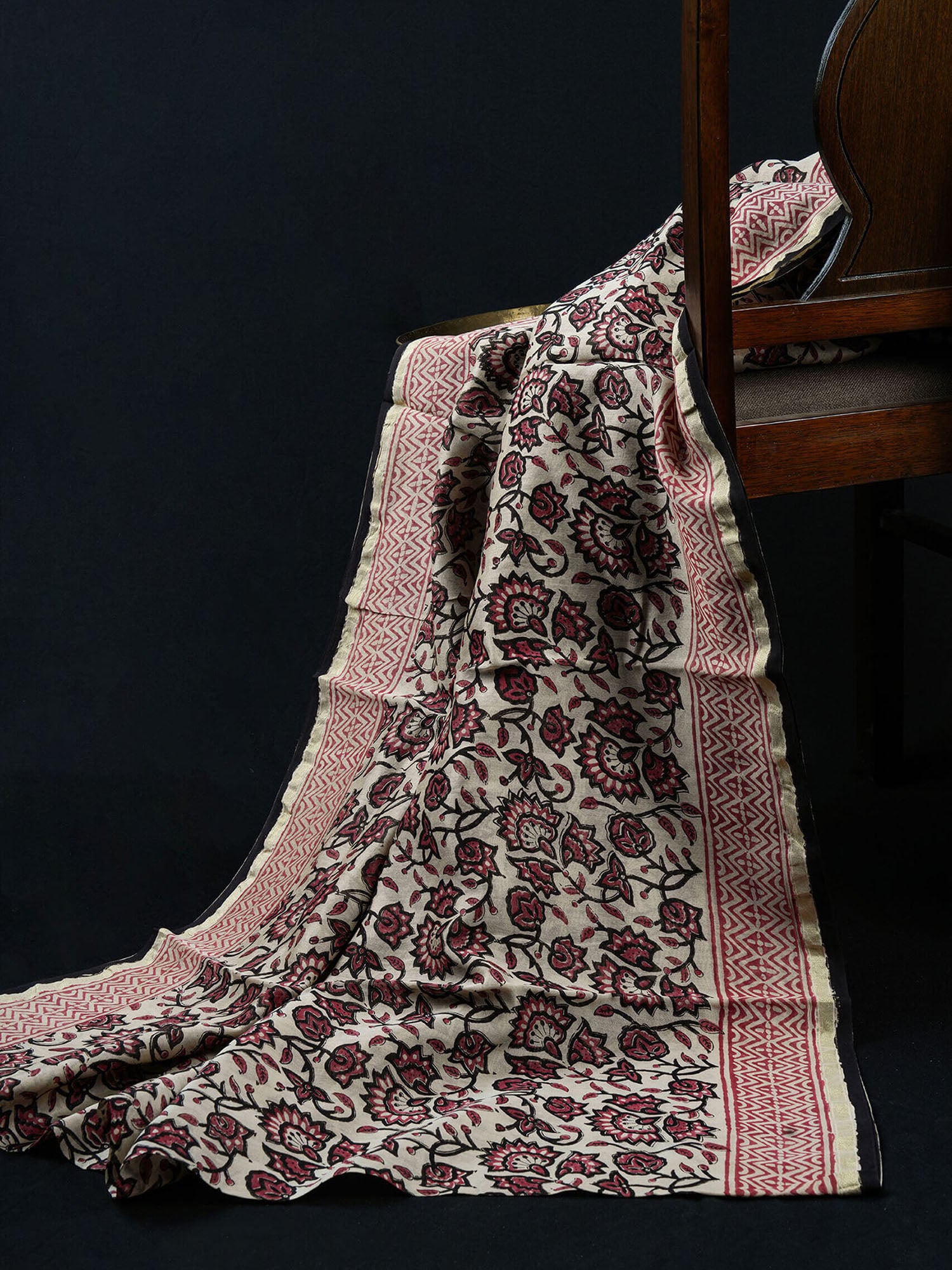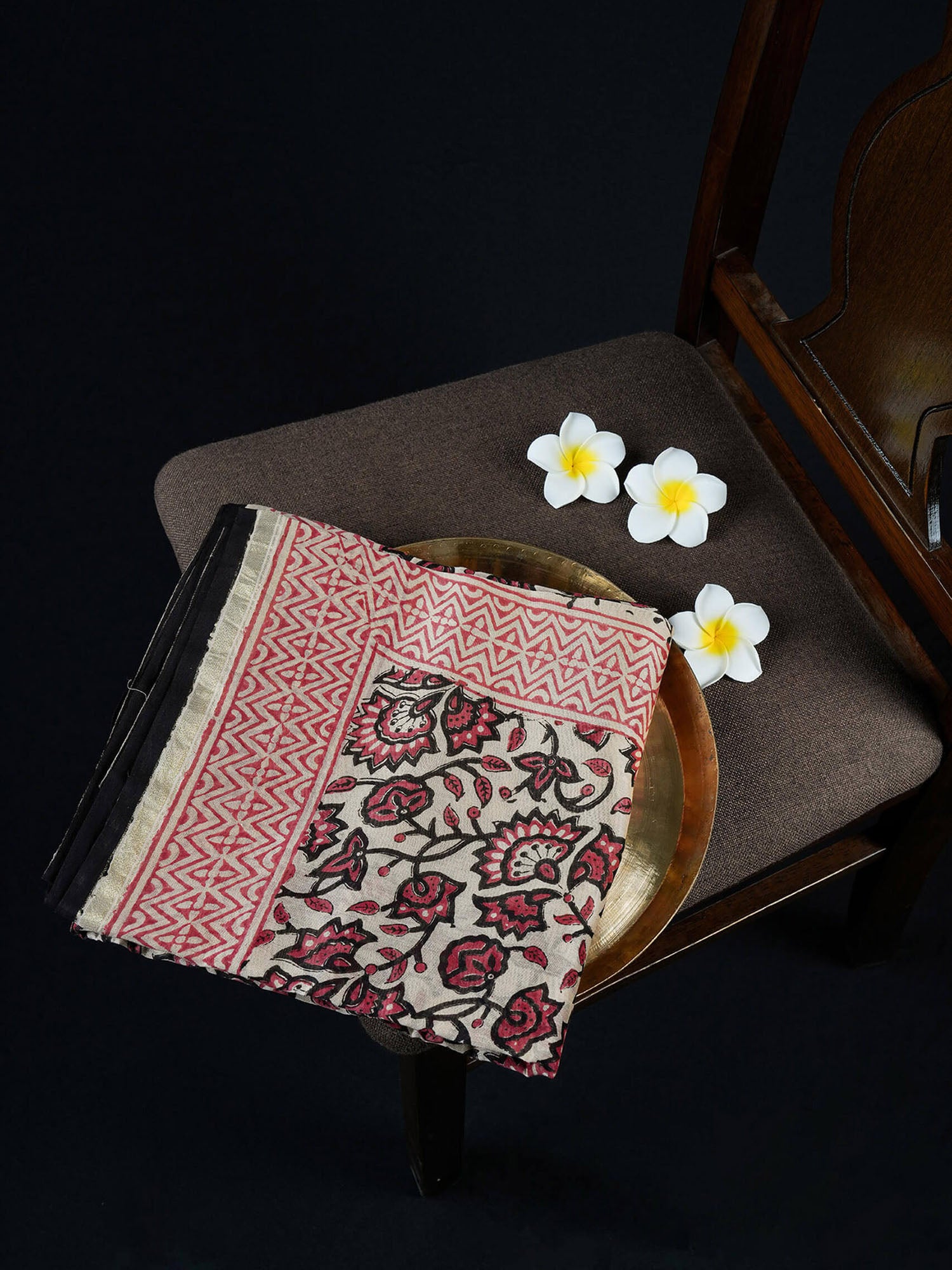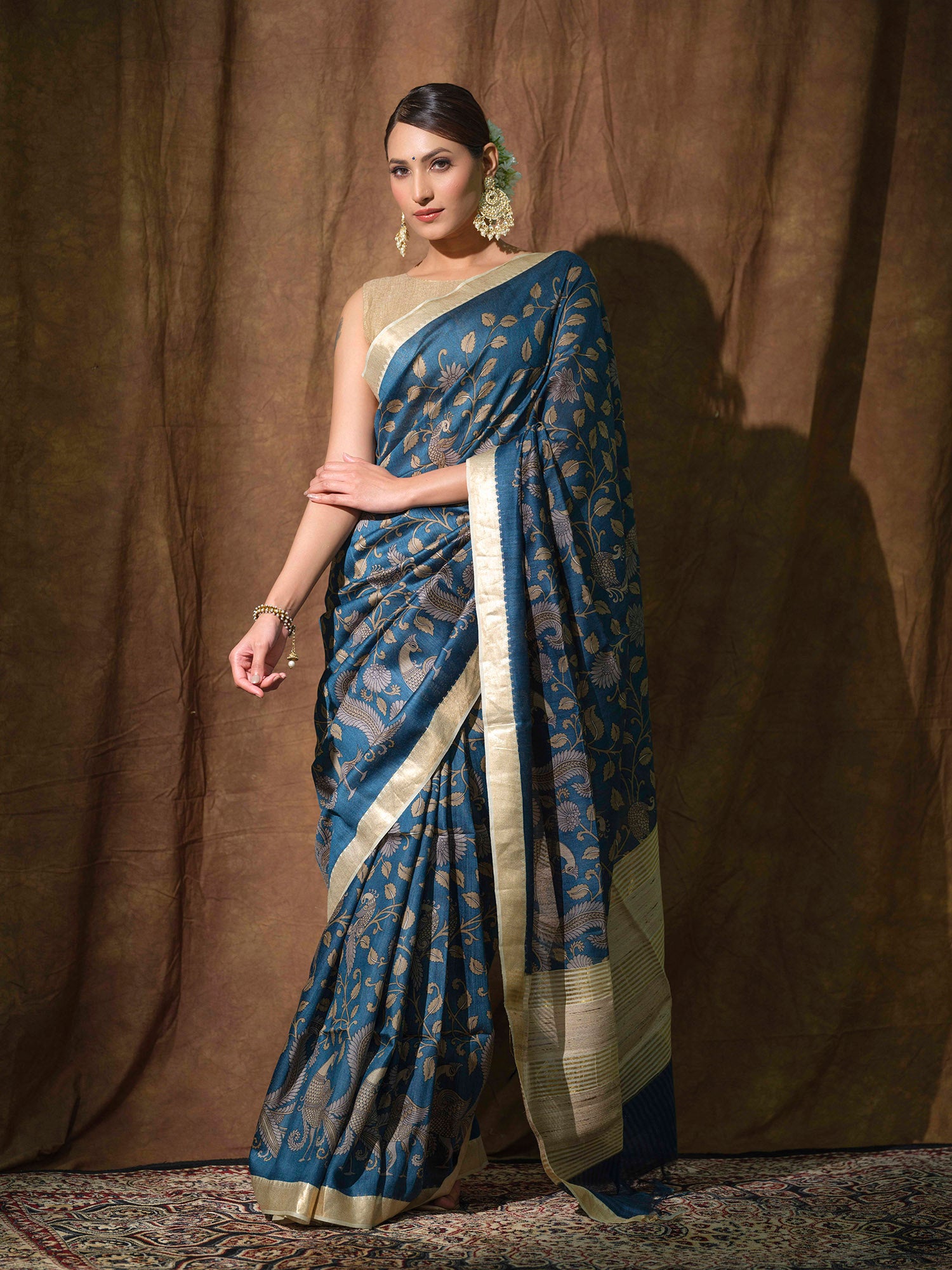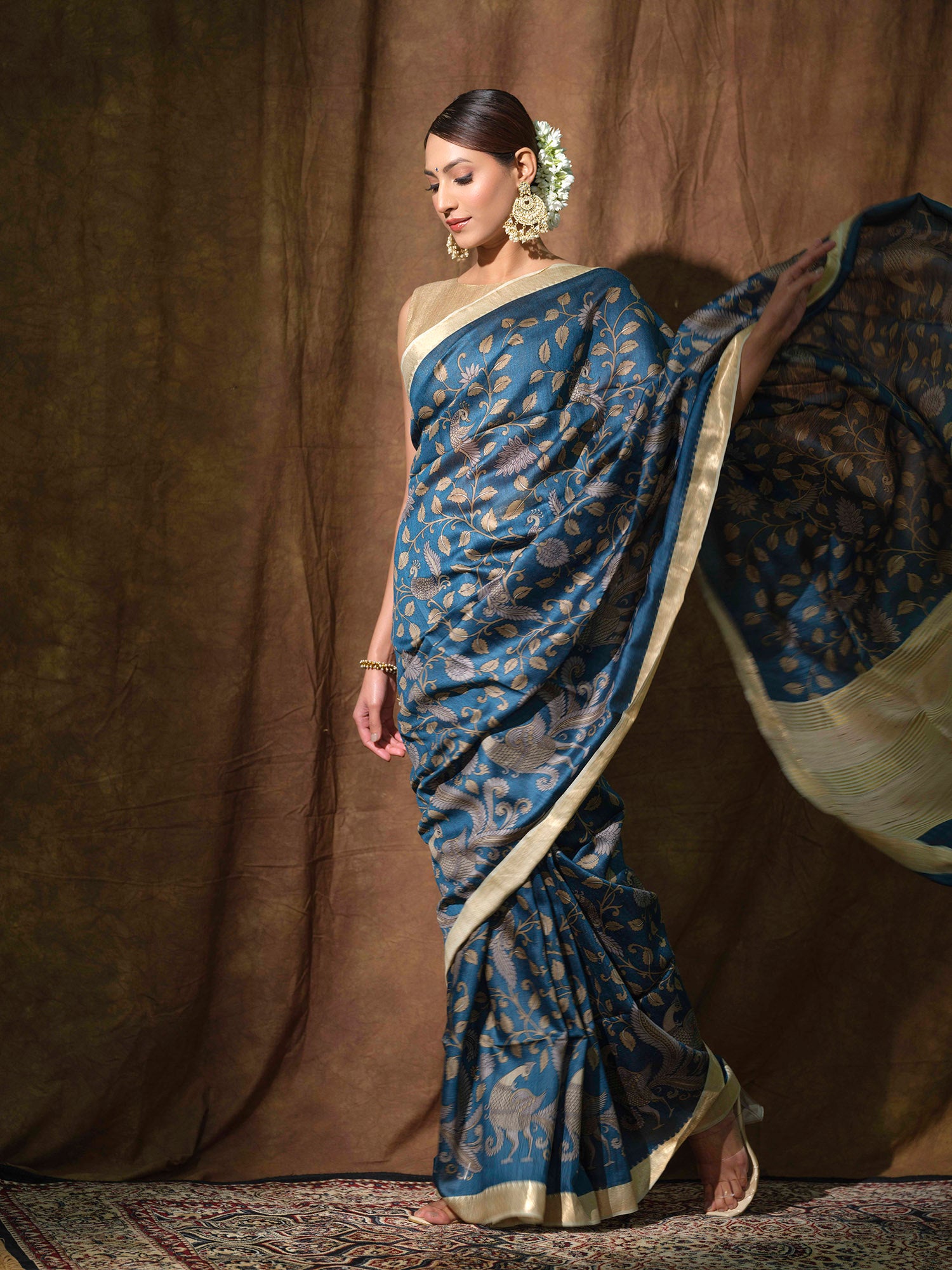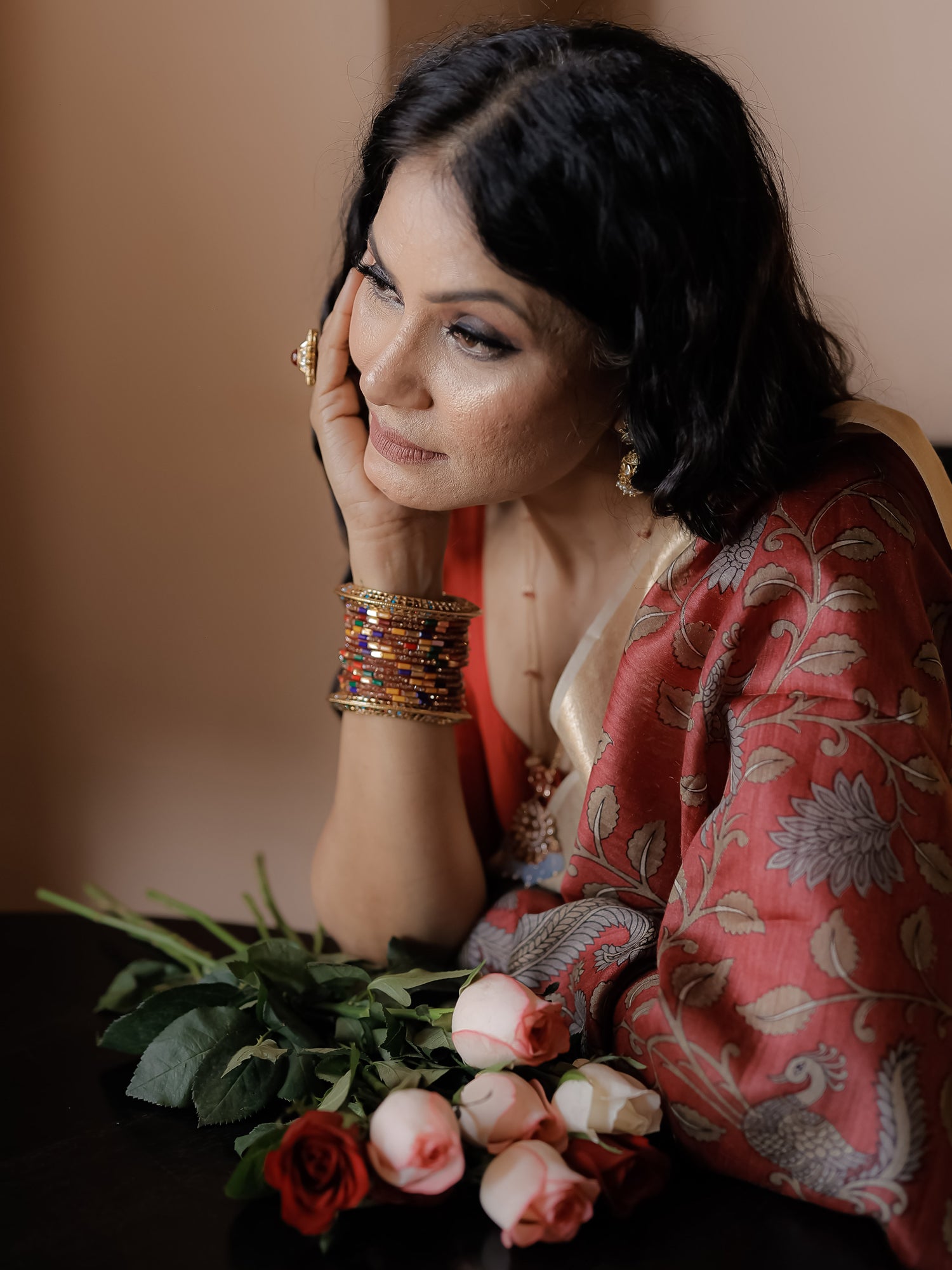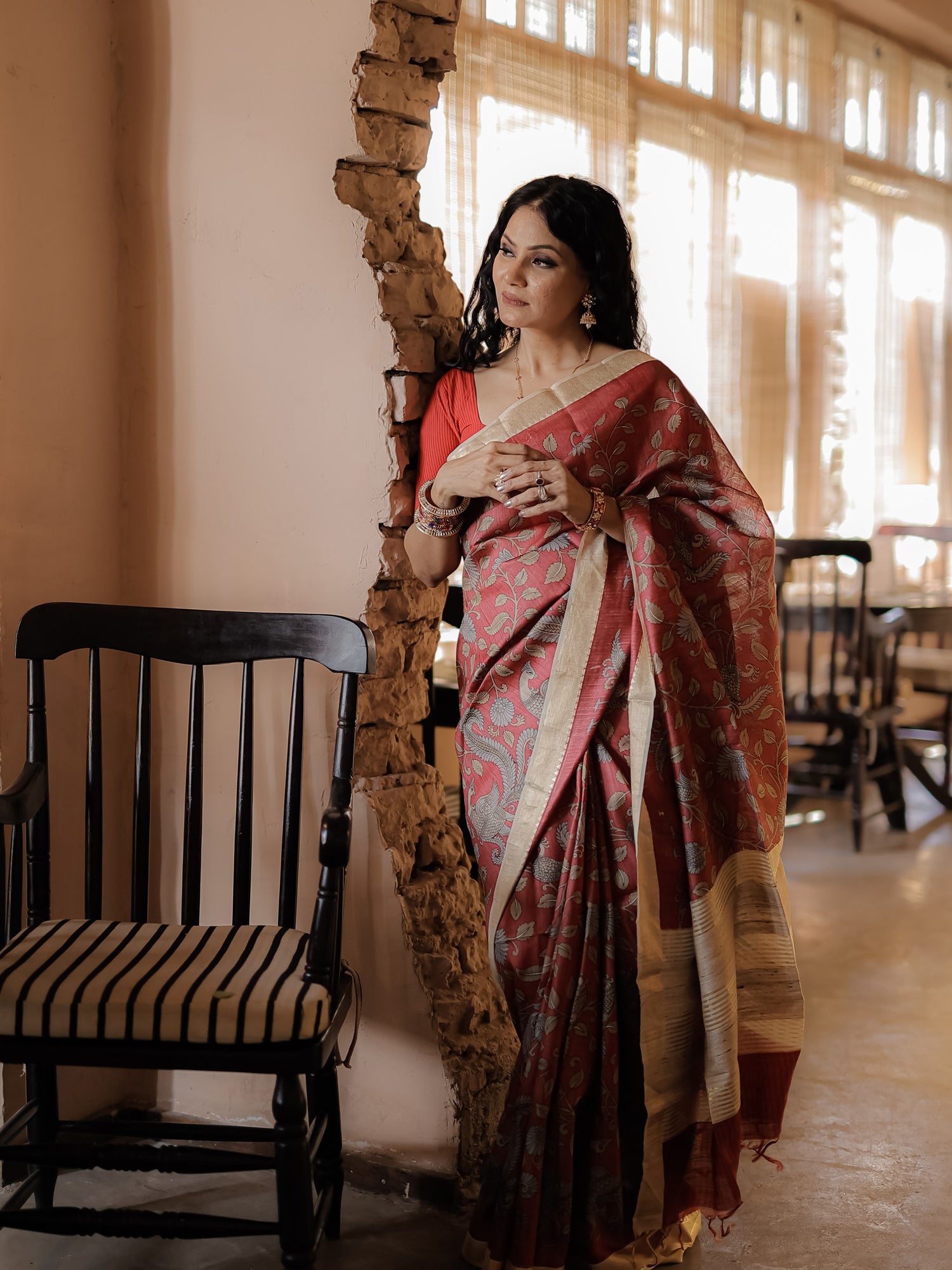At Mrida, we're passionate about keeping the magic of Kalamkari alive. We work hand-in-hand with skilled artisans and their families, carrying this tradition forward for generations. We source only certified handloom sarees, ensuring fair wages and sustainable practices. But it's not just about selling these masterpieces, it's about sharing the stories these sarees hold.
The Origin of Kalamkari Print
Kalamkari was born centuries ago in the villages of Southern India. The word "Kalam" means pen, and that's how the magic starts. Artists dip bamboo pens into non-toxic dyes. We get it, in this era of fast fashion and power loom, things like these become a little hard to imagine. But that's why we are here, and that's our mission and vision, to revive and illuminate the fading art of handloom, for the generation to come.What are the 23 steps of Kalamkari?
The creation of a Kalamkari masterpiece involves a series of a perfect 23-step process. Each step, from preparing the fabric to the final touches, contributes to the beauty and enduring quality of these hand-painted textiles.
Step 1: Bleaching: The cotton or silk fabric is thoroughly bleached to remove impurities and create a perfect canvas for the artwork.
Step 2-4: Softening and Strengthening: The fabric is treated with a mixture of myrobalan fruit, cow dung, and buffalo milk to soften the fibers and enhance their ability to absorb the dyes.
Step 5-6: Sun Drying and Washing: The treated fabric is sun-dried to remove excess moisture and then washed in running water to ensure a smooth and even surface.
Step 7-9: Mordant Application: A mordant, typically made from alum, is applied to help the non-toxic dyes adhere to the fabric and prevent fading.
Step 10-12: Outlining: Skilled artisans use a kalam (pen) made from bamboo or date palm to meticulously outline the intricate designs on the fabric.
Step 13-18: Dyeing: Non-toxic dyes are prepared and applied in layers, following the outlines. Each color requires a separate dyeing process, and the fabric is washed and dried between each application.
Step 19-21: Hand-Painting: After the initial dyeing, artists use fine brushes to add intricate details, shading, and highlights, bringing the designs to life.
Step 22: Washing and Drying: The finished Kalamkari artwork is carefully washed again to remove any excess dye and then dried under the sun.
Step 23: Finishing: The dried fabric is starched, polished, and ironed to give it a smooth and finished appearance. It is then carefully inspected for quality control before being deemed ready for sale.
This elaborate process passed down through generations, ensures that each Kalamkari masterpiece is a unique and cherished piece of art. While every step is executed with utmost care and precision, the inherent nature of handcrafting allows for subtle imperfections. These are not flaws, but rather the marks of the artisan's hand, adding to the charm and individuality of each piece. Tiny variations in line, color, or pattern become whispers of authenticity, a testament to the rich heritage and human touch embedded in every Kalamkari creation.
The Secret Language of the Kalamkari Print
But it's not just the colors, the designs tell their own tales. Flowers like the lotus bloom with promises of purity, peacocks dance with their dazzling beauty, and scenes from ancient epics like Ramayana and Mahabharata unfold, like chapters in a book. Even simple objects are full of meaning – a chariot wheel, a paisley pattern – each holds a deeper connection to life and the stories we all share.Why buy a Kalamkari Saree
Honestly, it's the slowness that gets to us. In a world obsessed with what's fast and new, Kalamkari stands for something different. Each piece is a journey, patiently hand-painted, washed, dyed with so much care. No two are ever the same! Wearing a Kalamkari saree is like stepping into a piece of history, connecting with generations of artists who poured their skills into these incredible textiles.Of course, Kalamkari sarees are stunning, but it goes beyond that. Choosing one is about more than looking good. It's about choosing natural, sustainable fashion, and supporting artists who keep this tradition alive. It's wearing your values – that craftsmanship matters, that stories woven into what we wear matter.
Explore Kalamkari Sarees by Mrida
At Mrida, we don't just sell Kalamkari sarees, we curate them with love! We blend the old with the new, so you find pieces that fit your modern life. Imagine swirling Kalamkari patterns at a special event, or adding a touch of artistic elegance to your workwear– it's that versatile! We work closely with the artists because their stories are part of what makes our Kalamkari special.So, the next time you crave a saree that goes beyond mere fashion, a piece that speaks to your soul and your heritage, explore the world of Mrida's Kalamkari collection explore now.
